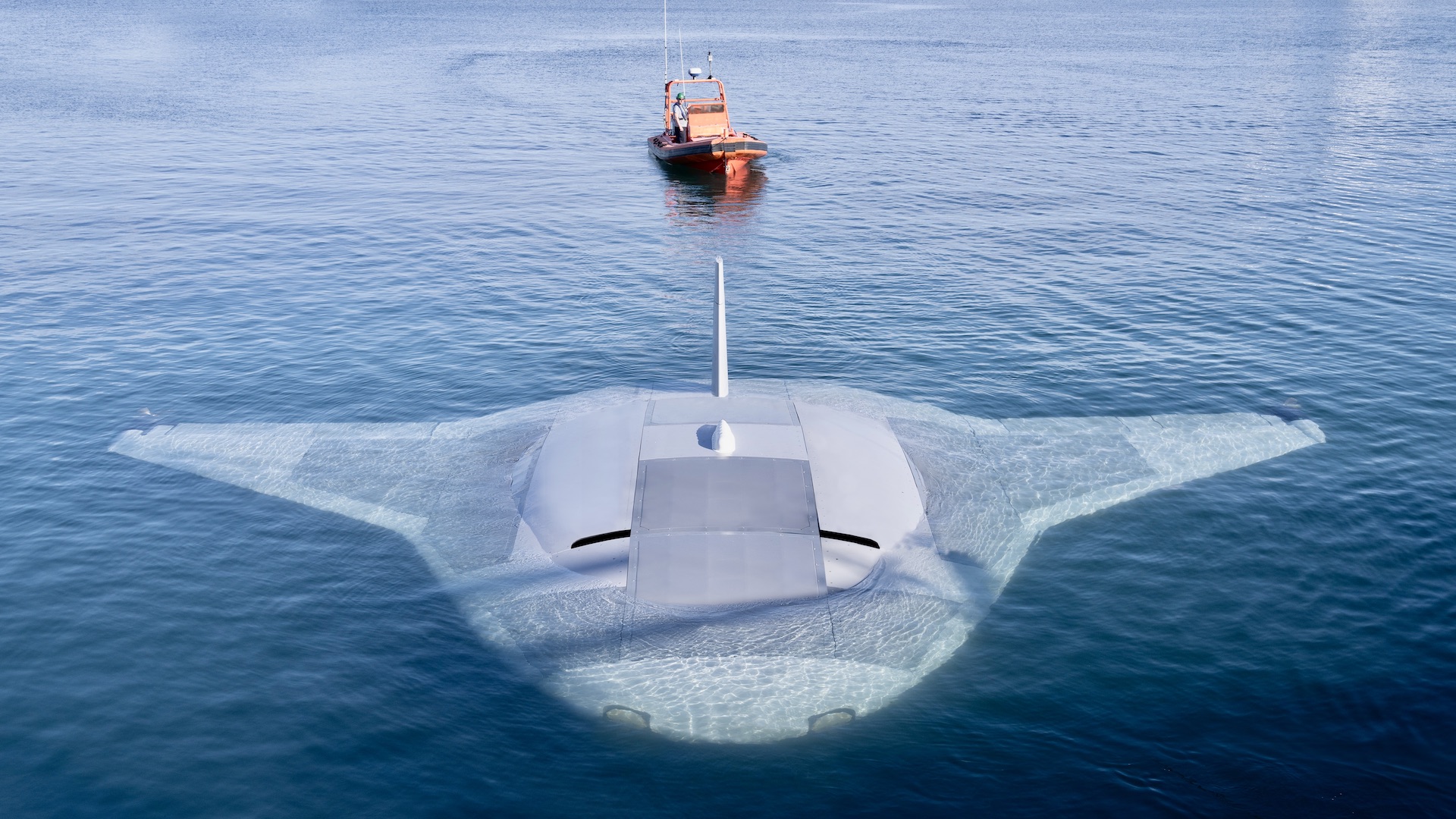Earlier in the month, we reported on the unveiling of Northrop Grumman’s Manta Ray long-endurance submersible drone demonstrator. At the time, it was described as an extra-large unmanned underwater vehicle (UUV), but we really couldn’t tell just how large it was. Now that’s changed. And by the images we are seeing, that description certainly fits.
New imagery of the testbed was released today by the Defense Advanced Research Projects Agency (DARPA), taken during in-water testing off the coast of Southern California in February and March this year. The completion of in-water testing marks an important stepping stone for the craft, which Northrop developed for DARPA under the Manta Ray program. This seeks to demonstrate critical technologies for a new class of very long-endurance payload-capable UUVs. According to DARPA, it is now engaging with the U.S. Navy on the next steps for testing and transition of the technology.
If the site of Manta Ray being towed in preparation for in-water testing above isn’t enough to indicate just how enormous it is, take a look at the image below of DARPA program manager Dr. Kyle Woerner (right) talking with a member of the Northrop Grumman team while standing atop the Manta Ray vehicle.

According to DARPA, the recent in-water testing of Manta Ray “demonstrated at-sea hydrodynamic performance, including submerged operations using all the vehicle’s modes of propulsion and steering: buoyancy, propellers, and control surfaces.”
In order to transport the UUV from its build location in Maryland to the test location in California, Northrop Grumman had to ship it in subsections due to its sheer size. According to DARPA, this supports the potential rapid deployability of Manta Ray globally, without it taking up valuable pier space at naval facilities.
“Our successful, full-scale Manta Ray testing validates the vehicle’s readiness to advance toward real-world operations after being rapidly assembled in the field from modular subsections,” Dr. Kyle Woerner, DARPA program manager for Manta Ray, said. “The combination of cross-country modular transportation, in-field assembly, and subsequent deployment demonstrates a first-of-kind capability for an extra-large UUV.”

“Shipping the vehicle directly to its intended area of operation conserves energy that the vehicle would otherwise expend during transit,” said Woerner. “Once deployed, the vehicle uses efficient, buoyancy-driven gliding to move through the water. The craft is designed with several payload bays of multiple sizes and types to enable a wide variety of naval mission sets.”
Northrop’s “extra-large glider” prototype draws inspiration from the “graceful glide” of the manta ray. The UUV features a lifting body that has sea glider-like properties. Previous visuals released by the company show that it is also propelled via two smaller propellers.

In essence, Manta Ray is designed to be able to conduct “long-duration, long-range missions in ocean environments where humans can’t go,” Northrop Grumman states. A key part of its functioning relates to the addition energy-saving technologies — allowing it to hibernate in a low-power state on the sea floor — and energy-generating technologies — which Northrop has worked with Seatrec, a renewable-energy company, on. You can read more about the detail of these aspects in our past feature on Manta Ray.
Of course, whether or not the Department of Defense ultimately ends up procuring Northrop’s offering remains to be seen. A second performer, PacMar Technologies, is continuing to test a full-scale Manta Ray prototype, DARPA notes. Northrop Grumman, Navatek — PacMar Technologies’ earlier name — and Lockheed Martin were awarded contracts to work on the Manta Ray program in 2020. Only the former two companies were selected to progress to the next stage in late 2021.
Whichever design or technologies the Navy picks from the Manta Ray program, obtaining a “new class” of UVV that can carry different payloads for long durations will no doubt be of benefit to it.
Broadly, the service is looking to field a wide range of UUVs of various tiers, with “extra-large” being the largest. Already, it has received the first of its Orca extra-large uncrewed underwater vehicle, or XLUUV, from Boeing, which we previously profiled. Having various tiers of UUVs will likely prove critical in any future maritime fight; and it’s not just the Navy that has been working hard to this end. China, notably, has invested heavily in uncrewed underwater vehicles as of late.
With the release of the new images, it’s now more clear than ever that the DoD is betting big — quite literally — on future Navy UUVs.
Contact the author: oliver@thewarzone.com
